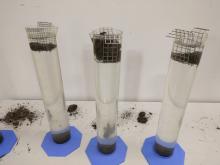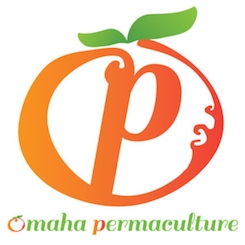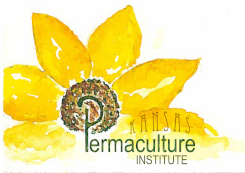By Ben Stallings |
- videos will be on Vimeo.com
- first field school was about how to cover crop, and what it could do for soil.
- focus on nutrient dense food led to focus on local organic food during conference.
- Aug 29 field day in Holton, KS, free of charge but please register.
"Healthy Soil, Healthy Humans" - Gail Fuller, G&L Whole Food
- in 2000, farming 3200 acres of corn & soy
- 2011, Ray Archuleta came to see farm, said it was too big, 5-600 acres at most.
- Today down to 800, downsizing to 600 next year, making same income without subsidies.
- Nutrient dense food is not just healthy or organic.
- Soil health helps stabilize the climate (at a large scale), lower taxes to stabilize government, conserve water, stabilize ecosystems, improve our own health
- cancer care cost $87.8G in 2014, up 10% from previous year
- diabetes, obesity, Alzheimer's, autism all increasing rapidly
- social habits have made food an afterthought rather than an event; processed, cheap food
- cheap food is no bargain when it makes you ill.
- Some organic chickens are raised in the same confined conditions as conventional.
- Not just food -- cotton is the most sprayed crop, so clothing contributes to the problems.
- nutrient density was lost primarily by losing carbon from soil.
- need to start viewing soil as an ecosystem, not a commodity. Soil organisms are what make minerals in soil available to plants.
- north american soils are degrading much faster than those in other parts of the world.
- Peer pressure is a huge factor: people come to these conferences and get fired up about soil health, but by the time they get home they're tilling again.
- Finding good groceries in the store is tough, so consumers spread referrals by word of mouth.
Soil demos: Ray Archuleta
- Ray and his wife have recently been tour guides for visitors from South Africa.
- soil aggregate test has been incredibly effective at converting farmers to no-till.

Ray Archuleta's soil slaking demo
- three tall beakers of water with supports a few inches down. One chunk of soil from conventional, one from no-till farm, one of grassland. Try the test before doing the demo! not all soils slake. What you want is for the soil to hold together -- grassland soil holds together due to aggregates; tilled soil slakes.
- Tilling wakes up the opportunistic bacteria that consume the biotic glue holding the soil together. Also kills the fungi.
- "organic matter" is very poorly defined. It is the fusion of life and death and the excretions of life, creating complex molecules, many of which have not yet been identified, that hold the soils together. 40% of OM is dead microbes.
- Tilled soils will always be addicted to inputs. Organic farmers should reduce tillage and use more cover crops. Tilling should hurt!
- Root word of idiot is Latin idiota for ignorant person, from Greek idiotes, meaning private person who lacks professional knowledge.
- 8 principles of holistic management: understand social & ecological context; reduce disturbance; cover soil; grow living root; diverse plants; diverse animals; integrity; adaptive mgmt with holistic planning.
- Nature never farms without animals, period.
- Emerson quote: "The man who grasps principles can successfully select his own method." No-till is a tool, not a goal. Understanding the principle is the goal.
- Four ecosystem processes: photosynthesis, water cycle, nutrient cycle, biodiversity.
- The plant is the mouth of the soil.
- 40% of rain comes from transpiration, not evaporation from bodies of water.
- Dust storms happen every year: Texas 2016, Iowa 2017, in spite of conservation plans and research plots.
- Rainfall simulator: sprinkler on a pan of tilled soil vs. layer of intact no-till soil with residue. Muddy water washes off the tilled soil while leaving it dry underneath! Find video! Tracy Karcher has a tabletop version at NRCS.
- Haying is as bad for the system as overgrazing because everything is removed.
- All tillage tools destroy soil structure, decrease infiltration, reduce OM, and increase weeds.
- The real problem is the compaction between our ears!
- Upton Sinclair: "It is difficult to get a man to understand something, when his salary depends upon his not understanding it."
- recent reenactment of Milgram experiment: 65% of people follow scientist's directions in spite of reservations.
- We are at a point in history where we have to unlearn and relearn.
- Systems thinking: listen to Russel Ackoff lecture
- Reductionist conservation focuses on the parts but doesn't assemble them correctly. Filter strips adjoining tilled fields are like diapers.
- Trees can grow out of solid rock, don't need tillage because of symbiotic fungi and bacteria.
- Example: calcium sea beds in Australia have fertile soil on top.
- Example: Chernobyl was predicted to be a desert, but instead it's a nature sanctuary.
- Our lakes and rivers are filled with nutrient conservation plans!
- Rotational grazing results in much more OM and better infiltration than either continuous grazing or cropland.
- How to manage disturbance: reduce frequency, intensity, scale.
- Most powerful tool to determine soil health is a shovel.
- One word for soil health: Biomimicry. We often don't get it because our schooling gets in the way.
- Mulch! Nature covers the soil.
- A spraying machine can plant cover crop in standing corn.
- Baba Dioum: "In the end, we will conserve only what we love. We will love only what we understand, and we will understand only what we are taught."
"Biodiversity: Friend or Foe of Agriculture?" - Walt Davis
- Ranching has the greatest potential to create good habitat of any endeavor in the US.
- If all ecological niches are filled, it means you have a stable, productive ecosystem. It doesn't mean you'll have the biggest yields of any particular crop.
- Nature will attempt to fill all available niches so that resources are fully utilized.
- Agriculture today is too dependent on mining resources.
- Greenbriar is a weed, unless you have sheep, then it's ice cream.
- We have a mesquite problem and a red cedar problem and a fire ant problem because they are better adapted to the landscape we've created than the organisms we'd prefer.
- Ceresia lespediza's high tannin content is good for curing sheep and goats of internal parasites.
- A coyote that is not killing sheep (due to easier prey) is keeping other coyotes away. Coyotes control rabbit and field mouse populations so they don't denude the landscape.
- You have to have animals in the system if you're going to maintain fertile soil.
- Mirex spread throughout the South to poison fire ants has caused a collapse of native ant populations and so of lizards and the rest of the food chain.
- Desertification is like the lake effect in reverse: proximity to drought causes drought.
- We don't need to do away with cattle, just poor management of cattle.
- We don't need to eliminate weeds, disease or parasites, we need to increase diversity so that populations are not concentrated enough to interfere with the ecosystem.
- If you knock out all the internal parasites of an animal, it stops producing antibodies that prevent implantation, making it more vulnerable to parasitism.
- Monocultures are inherently unstable because nature will not tolerate wasted resources.
- Heavy earthworm activity dramatically improves soil productivity.
- Dung beetles reduce fly populations as well as distributing fertilizer.
- Glyphosate was registered as an antibiotic and may have weakened the guts of honeybees, among others.
- Building biodiversity is the only way to create productive and stable environments.
- Fire is a harmless tool when used infrequently. Regular fires destroy the groundcover which destroys the water cycle. High-stock-density grazing can control red cedar as effectively as fire while healing the ecosystem.
- Gail says: 100% of visitors to the Flint Hills who are familiar with prairies and range management are appalled by the mismanagement and erosion.
- Ray says: rangeland that has gone to shrub has gone fungal, and fire will not switch it back to bacterial soil, but herd impact will.
Understanding GMOs and Glyphosate: Flawed Science, Failed Promises: Dr. Don Huber
- Mural on the side of a cafe in LA: people saying no to GMO illuminati.
- Genetic engineering has failed to deliver on any of its promises. Based on a silver bullet approach, which backfires to produce sick soils, deteriorating health for people, animals, and environment.
- Based on flawed science: one gene to one function. Human genome is barely larger than that of an earthworm.
- Gene editing changes the spatial relationship of the gene with other material and the environment. Like a Rubik's cube, changing one side changes other sides -- different proteins created. For example, adding the Roundup-ready gene creates 14 other novel proteins, and no one yet knows what their function is.
- Genes are promiscuous and can be picked up by other organisms by way of bacteria.
- GE techniques up to now have been very precise; the same gene inserted into two different plants is very different in genome.
- Toxic effects of GMO crops have been documented but covered up or discredited. GMO corn, soy, canola, and cotton all produce formaldehyde not found in non-GMO equivalents.
- 2015 bird flu outbreak killed 46M chickens and turkeys in midwest, but did not affect any organically grown or free-range birds, despite official explanation of wild birds spreading the virus. Postulated explanation is that GE feed made intestinal flora susceptible to the virus.
- Mice and squirrels ignore GMO Triple Stax corn when isogenic equivalent is available.
- Glyphosate originally patented to clean out steam pipes, as a strong chelator. Then as broad-spectrum herbicide, then antibiotic. Also is a synthetic amino acid, substituting for glycene, causing proteins to fold differently. Inventor quoted as saying steam pipes in boilers are where it should have stopped.
- Used on 100% of soybeans, 85% of cotton and almonds.
- Chelating action interferes with Shikimate pathway of cell metabolism, which requires micronutrients to function. Farmers are encouraged to apply mineral supplements along with Roundup to attempt to balance the mineral deficiencies caused by the Roundup.
- Even just the amount that drifts from neighboring fields is enough to cause mineral deficiencies in crops.
- Additionally, the Roundup-Ready gene by itself causes Fe, Mn, Zn deficiencies in crops, even if no Roundup is applied.
- When applied to plants, glyphosate spreads through exudates to beneficial soil organisms, poisoning them but stimulating disease organisms due to less complex sugars (glucose rather than sucrose, etc.)
- Example: Sudden death syndrome (Fusarium solani) increases in treated soil while beneficial bacteria decrease.
- Takes twice as much water to irrigate a Roundup-Ready crop.
- Lower lignin content in glyphosate-treated crops causes weaker stems.
- depleted soil life causes poorer micro-aggregate formation, decline in soil structure.
- Residual glyphosate: supposed to wait 3 weeks after applying before planting. It doesn't degrade, it just chelates minerals and becomes inactive. Even 35 days after application, nutrients are still declining.
- Herbicide action is by soil-borne fungal pathogens. Can't kill a plant in sterile soil with glyphosate. Real culprits are Fusarium, Pythium, et al.
- As a result, all crops are now being affected by "re-emerging" diseases that were previously all but eliminated.
- In 2014 200,000 tons of RR sugar beets rotted in the ground due to disease buildup.
- Bacterial toxins produced in roots can be transfered to stems of straw, used in cattle bedding can cause death or sterlization.
- Glyphosate resistant weeds affect bee health and honey quality.
- RR creeping bent grass grown in containment escaped and cross-pollinated, now spreading worldwide as an invasive weed.
Friday morning recap
- field we saw yesterday was former farm & pasture, had extremely high phosphorus; for years only legumes would grow there because they could tolerate the phosphorus, but now grasses are moving in. One grazing of sheep last fall set the ragweed and sunflowers back allowing grasses to predominate. Gail is under a tremendous amount of pressure from neighbors to clean up the fields rather than let them heal naturally.
- Tree seedlings are coming up throughout the field since they stopped spraying. Sheep will help; hoping to avoid spraying and burning.
- Conventional hybrids still outyield GMO equivalents in side by side trials, with or without Roundup. Only way GMOs outyield is if the conventional have been sprayed dead.
The Impact of GMOs and Glyphosate on Animal, Environmental, and Human Health: Dr. Don Huber
- All the GM crops have many characteristics that have never been studied for health impacts. Reduced nutrient density, increased mycotoxins and allergenic proteins, ecological disruption, and direct toxicity of glyphosate.
- RR crops have reduced nutrient density even without application of Roundup. Up to 52% reduction in sulfur and 49% iron in alfalfa.
- Manganese deficiencies cause stillborn calves; endocrine disruption causes cleft palate and underbite in animals and people.
- It's true that mammals don't have the shikamate pathway, but our gut bacteria do.
- Antibiotic effect of glyphosate causes pathogens to dominate in poultry, chronic botulism in cattle, even at just 0.1ppm glyphosate in feed.
- Chronic fatigue syndrome and sudden infant death syndrome are related to botulinium toxin.
- Vaccines including MMR contain glyphosate, given to kids before they have the ability to handle it. Comes from the glycene in gelatin.
- 2013 study of pig stomachs shows erosion/ulceration and irritation from GMO soy/corn feed. Related to leaky gut, Chrohn's, celiac, inflammatory bowel disease in people.
- New diseases since 1996 include hemorrhagic disesase in cows, bee colony collapse disorder. Combination of malnutrition, reduced lactobacillus & bifidobacterium, and direct toxicity.
- Bees foraging on GMO crops can't digest their own honey.
- Glyphosate contributes 1/3 pound of phosphorus pollution per year per acre in Lake Erie watershed.
- 2002 US Cattlemen's Association testified to congress about unexplained new illnesses, 40-50% of pregnancies being lost.
- Balinese study: human mothers who are consuming primarily GMO/Roundup food have darkened, unhealthy umbilical cords and placentas.
- 59.3% decline in sperm counts in Western men in the last 40 years, corresponding perfectly to release of glyphosate in 1974.
- EPA has raised allowable levels of glyphosate residues at request of the companies, with no research to back it up. EPA and FDA do not do any independent research! Levels are not based on safety, they're based on residues found in crops.
- Highest levels of glyphosate are not found in GMO crops, but in ones desiccated by glyphosate before harvest, especially chick peas but also rye, wheat, oats, lentils. Chemical desiccation has been common practice since 2005.
- Breweries are testing barley for glyphosate because it disrupts the brewing process.
- Assessed risk of dietary glyphosate and AMPA (breakdown product) is 82.7%, higher than any other pesticide risk.
- Increases in cancers in the past 40 years have all been in tissues targeted by glyphosate; decreases have all been in tissues where it doesn't accumulate.
- The few independent studies show 40% increases in cancers and lymphomas in rats.
- 60% of diseases that are increasing in incidence can be cured by a fecal transplant, but you have to have the right donor.
- 1 in 4 sugar cane workers in El Salvador die of kidney failure. Largest backlog in transplants is for kidneys because of low availability of healthy donors.
- Yakima Valley epidemic of microcephaly corresponded to aquatic weed control with glyphosate.
- 2,4-D is even more potent endocrine disrupter, and in combination goes up to 30,000x the potency of glyphosate.
- Bt insecticide found in 93% of Canadian mothers and 70% of cord blood due to gene transfer to intestinal flora.
- Recommend Steven Drucker: Altered Genes, Twisted Truth.
- Death-bed letter of EPA senior toxicologist Mariam Coakley (sp?), 2013
- Flawed safety evaluations e.g. 2014 rat study: control group fed the same thing as experimental group, so of course they were substantially equivalent.
- "No evidence of harm is often presented as evidence of no harm."
- The 5 Rs of correction: Recognize the problem; Remove the source; Restrict the damage; Remediation; Restoration.
- Humic acid and clinoptilolite have promise for remediation in animals as well as in soil. Milk thistle and other supplements can suppress cell division in cancer, etc.
- Analytical tests can determine the number of novel proteins present in feed, but most of them are not yet named in catalogs. Anywhere from 14 in most soybeans to as many as 100+ novel proteins in corn, depending on the GM event.
Factors that Increase Profitability and Stability of Grazing Programs - Walt Davis
- Ag is the most overcapitalized industry in the US due to debt and instability.
- Get your operation in sync with reality: does it fit your climate, abilities, needs, and goals?
- Sheep and goats are more profitable than cattle, but they are not little cattle, they are sheep and goats.
- Ranchers are traditionally unwilling to write down their budgets on paper. Calculate the income & expenses, assess the risk, write and update a business plan. Be an economic pessimist.
- Eisenhower: "The plan may be useless, but the planning is invaluable."
- Biological capital is at least as valuable as fiscal capital.
- Design and use a carefully planned, managed, and monitored grazing program.
- the plan must meet the needs of land, animals, and people.
- All land problems can be cured by good management.
- Animals' needs must be met by the land with minimal supplementation. Parasites can be managed by allowing the land to recover before regrazing the same animals.
- Biological capital is current biodiversity + long term effects of past biodiversity.
- Goal should be profit and stability, not production. An expenditure should be made only if it will generate enough profit to offset the additional risk; reduce cost of production; *and* increase stability of production.
- Any regular expenditures signal an opportunity to improve management. The question is not how to lower the cost of the practice, but how to change the operation so the practice is no longer needed. "The day I stopped spraying weeds, I had as many weeds as the day I started."
- Making hay is very unprofitable. Feeding hay can be profitable, but making it is not.
- Book recommendation: Holistic Management by Allan Savory.
- We made a mistake in changing from animal husbandry to animal science. We need the science, but we can't dominate nature with science.
- Primary factor in predicting successful calving is how much fat the mother has at the time. Winter calving has a terrible success rate because mothers aren't fit and calves don't have protection from the cold.
- Agriculture is a biological pursuit. Its goal should be to increase life so we can use some of the surplus.
- A stocking rate that's too high is a guaranteed profit killer. A stocking rate that's too low causes a shift in vegetation and reduces production.
- A pasture cannot be overgrazed; individual species in that pasture are overgrazed if they can't regrow without tapping long-term reserves.
- Reduce stocking rate as soon as it's seen to be too high; don't hold stock on land that can no longer feed them.
- Cattle prefer grass, sheep prefer forbs, and goats prefer browse. They can eat other things but won't thrive. It's easier to fit the animal to the available forage than vice versa. If you don't have browse, you don't need goats.
- Weeds often contain more nutrients than grass. Grazing them increase mineral cycling and energy flow.
- Plan for the drought that is surely coming. Have a destocking plan in place, and reduce herd size as soon as drought is observed.
- The job of stockmen is to make the animals as happy as they can possibly be.
- The best animals are the ones that work under your conditions, including your management style. There is no best breed. Start with locally acclimated animals.
Personal Knowing vs. Information Knowing: Ray Archuleta
- Scientific knowledge is the lowest form of knowledge. It doesn't address ethical and moral motivations.
- Learning experience: farm had several monoculture test plots, then planted all leftover seed in two end plots. Drought killed all the monocultures, while the interplanted plots thrived.
- Agroecology takes the focus off the tools. Organic farmers till too much; no-till farmers spray too much. Used a VW Rabbit or a riding mower (with the blades off) to roll cover crops. Can do it with a 2x4 and a rope. Anything you can use as a tool can harm you.
- One district conservationist got 40% of his county to use cover crops in 3 years. Called chemical no-till a desert. Have to wean no-till farmers off chemicals to cover crops.
- biomimicry / ecomimicry: nature built soil by migrating herds. It's the timing, not the numbers. Compaction is a function of time. Concentrating livestock is important to concentrate the impact and manure.
- Rolling/crimping crops is important because fungi can't jump! Got to bring the stems down to cycle the nutrients.
- Batt latch is a timer that releases a fence to let livestock through without a human present.
- Grazing pigs are very profitable: $25/chop pastured pork. Mob grazing with fencing attached to livestock trailer: move the shelter and enclosure at once.
- Cows and Keyline: restoring desert grasslands
- Millons of acres in the west are effectively solarized, with a crush of dead soil.
- Keyline plow on contour breaks the crust, allowing weeds to provide cattle feed. Can't do it with a disc. Cattle then eat the weeds and plant prairie.
- A farm is (or should be) self healing and self regulating.
- In Chihuahua, MIRG drowned mesquite and cactus in a sea of grass.
- Fungal network is critical for restoring nutrient density. 90% of nutrient cycling is biological. N, P, K, and OM in isolation have no correlation to plant success, it's all about the bacterial/fungal ratio, especially in early plant stages.
- New Haney soil test: http://research.brc.tamus.edu/snap/ no correlation with university soil test. Haney test is based on biochemistry rather than inorganic, mimics root exudates. Traditional test misses 50% of nitrogen in the soil. Use Ray Ward Lab, www.wardlab.com.
- Human integrity = ecological integrity. "If you want to make small changes, change how you do things. When you want to make big changes, change how you see things." -- Don Campbell
- "What America does best is produce the ability to accept failure. At no point in history have so many non-risk-takers, that is, those without personal exposure, exerted so much control." -- Dr. Nassim Nicholas Taleb
- Recommendation: Simon Sinek, Start With Why and Leaders Eat Last
- Don't do other people's planning for them. Help them plan it. Without skin in the game, they won't implement. A lot of other countries have no crop insurance and no governmental farm support programs.
- Case study: farm in Arkansas planted 8000 acres to cover crops to beat Palmer amaranth. His professor said he'd attract every pest in the county; he replied that he doesn't get his research funding from Monsanto. His goal is zero irrigation.
- Ray is now consulting at SoilHealthAcademy.org, SoilHealthConsulting.com. Focus is on covering the land as the first step.
A Future for Independent Science to Promote Regenerative Agriculture -- Dr. Jonathan Lundgren
- What Dr. Huber said about glyphosate is also true about half a dozen other pesticides.
- Prompt dung removal is crucial for nutrient cycling, pasture quality, and livestock health. Dung beetles are valued at $380M annually but are a small minority (3%) of the species that live in dung. They are the ones that punch through the crust and make the interior accessible to the other insects!
- "Why is science necessary? Because 'I told you so' isn't good enough."
- Comprehensive study of regenerative vs. conventional corn plots in 4 states: pests were 10x higher when insecticides were used! Yields of corn were a little lower in regenerative, but total yield of all crops were higher and input costs were lower, so that regerative systems were twice as profitable as conventional. Profit did not correlate with yield, it correlated with soil OM.
- Similar study: ranchers who rotate more frequently have fewer maggots than those using insecticide for fly control.
- Log in to post comments





